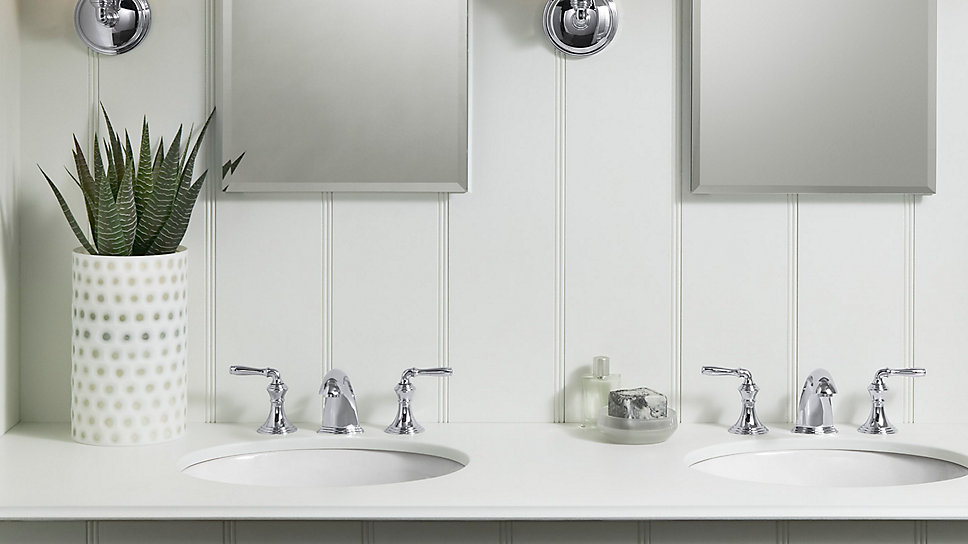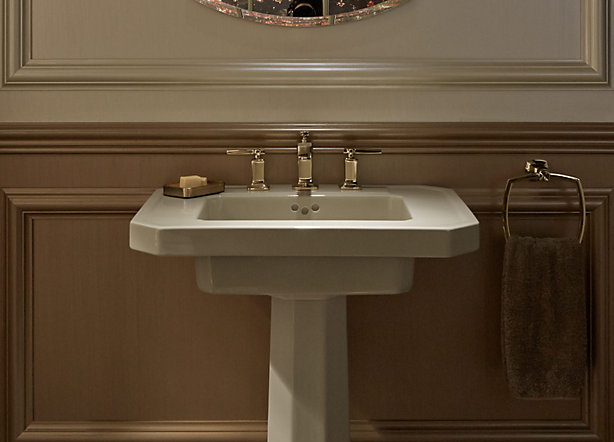Pure as the driven snow
Popular at least since the early 20th century, the white-on-white bathroom remains strong today. Barbara Kalis, a Seattle-based interior designer and color consultant, says people are drawn to all-white bathrooms because we associate white with purity, healthy and hygiene. "It looks so clean," she says, "and that's what we do in bathrooms; we get clean."
If you're thinking about using an all-white scheme for your bathroom, consider using a broad palette of whites instead of just one and vary texture for the best effect.
"When you're working with whites, you want to look at honed, brushed and tumbled as well as shiny surfaces," says Kalis. "You can combine those textures relatively easily in an all-white bathroom."
For example, if your toilet, sink and bathtub are glossy white, you could use a matte-finish tile for the tub surround and backsplash, and perhaps a tumbled stone tile for the countertop.












